Keynote Forum
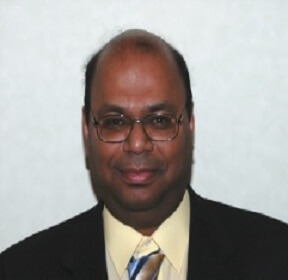
Anjan Biswas
Alabama A and M University USATitle: Perturbation of cubic-quartic optical solitons by semi-inverse variational principle
Abstract:
The dynamics of soliton propagation through optical fibers is possible when a delicate balance between group velocity dispersion (GVD) and nonlinearity is maintained. It may so happen that this dispersion runs low. In that case, it is necessary to compensate for GVD with third and fourth order dispersions. The solitons in this case are referred to as cubic—quartic optical solitons. In presence of perturbation terms, the governing perturbed nonlinear Schrodinger’s equation is no longer integrable when the perturbation terms are considered with full nonlinearity. In such a situation, semi—inverse variational principle (SVP) comes to the rescue. An analytical soliton solution is obtained with the aid of SVP. The study is conducted with Kerr and power laws of nonlinearity. The existence criteria for the solitons will also be presented.
Biography:
Dr. Anjan Biswas earned his MA and Ph.D. degree in Applied Mathematics from the University of New Mexico, USA. Subsequently, he completed his Post-Doctoral studies at the University of Colorado, Boulder, Colorado, USA. Currently, he works as a faculty member in Mathematics at Alabama A&M University that is located in Normal, Alabama, USA. His current research interest is in Mathematical Photonics. In particular, he focuses on the propagation of solitons through optical fibers along trans-oceanic and transcontinental distances. He concentrates on soliton perturbation theory, quasi-stationary solitons, quasi-particle theory, variational principle as well as semi-inverse variational principle that are all applicable to the study of optical solitons.
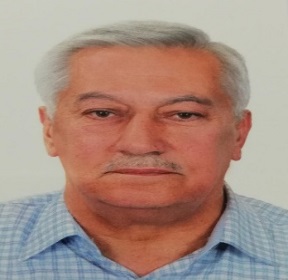
Lutfi Ali Mahmood
IraqTitle: The effect of pitch-size on the dispersion and some parameters of photonic crystal fibers
Abstract:
Photonic Crystal Fibers (PCF) represents one of the most active research areas today in the field of optics. The diversity of applications that may be addresses by these fibers and their fundamental appeal, by opening up the possibility of guiding light in a radically new way compared to conventional optical fiber have spun an interest from almost all areas of optics and photonics. The aim of this research is to explore the effect of the pitch size and number of ring on the dispersion and other parameters of the PCF.Two designs have been studied with the same parameters except the pitch-size and number of rings, the results has indicated that the zero dispersion λ zd in the PCFs have been pushed to the visible part of the spectrum while the dispersion in thePCFl
have been pushed to the visible part of the spectrum while the dispersion in thePCFl have flat region from (1.1 -1.5)µm.
have flat region from (1.1 -1.5)µm.
Biography:
Lutfi Ali Mahmood is an Assistant Professor in Laser – physics in one of the private universities in Erbil-Iraq. He holds a PhD in physics from Loughborough University of Technology, U. K - 1985. Lutfi has 40 years of teaching experience in different public and private universities in Iraq. He has also supervised 2 PhD and 15 Master students. He has presented and published several papers. Lutfi is teaching both under and post-graduates different subjects including General physics, Mathematics, Biophysics, Mechanics, Quantum mechanics, Lasers and Optics.
Speakers
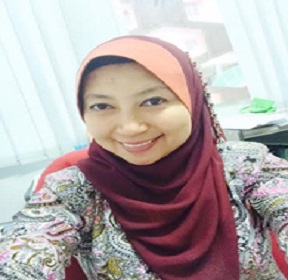
Rozalina Zakaria
University of Malaya MalaysiaTitle: Schottky contact optimization for metal/2D material interface for plasmonics enhanced heavy metal ion sensor in drinking water
Abstract:
2D nanomaterials become one of the most promising materials for sensing applications due to the ultrathin planar structure. Such ultrathin structure involves the electrons/holes are confined to a plane of atomic thickness makes two-dimensional nanomaterials sensitive (fast response) to the surrounding environment which can be fast changes in optical, electronic, and other properties or parameters in the 2D nanomaterials. However, 2D nanomaterials-based sensor has been suffering from high resistance and low sensitivity due to the loss caused by poor contact between the 2D nanomaterial and interface. In this work, different type of metal contact is needed for different chemically functionalized the 2D nanomaterial used for heavy metal sensing. The ultimate performance of the sensor can be optimized by minimize the low Schottky barrier (SB) height between the metal/2D nanomaterial using Transmission Line Measurement (TLM) process.
One of the most fundamental problems for the contact interface is that 2D nanomaterials cannot be doped easily. A high different in doping level between the interface of 2D nanomaterials and metal resulted in a high contact resistance lead to lower efficiency. Various techniques have been investigated and are reviewed to lower the contact resistance.
Biography:
Rozalina Zakaria received her B. Sc (Hons.) in Physics in 2000, Master in Applied Physics from University of Malaya in 2002 and later a PhD degree in Laser Physics in 2009 from University of Hull, United Kingdom. She has been involving in teaching many subjects namely; Fundamentals of Matter, Experimental Methods, Optics, Thermal Properties of Materials, Photonics Materials and Devices and Photonics and Optoelectronics. She joined Physics Department after her PhD before transferred to Photonics Research Centre since 2015. Her research interest includes fundamental and applied aspects of fundamental nanophotonics such as optical fiber sensors and solar cell. Her career is spanning over than 7 years which has resulted in the graduation of 3 PhD students and 5 Master students. She is now supervising 4 PhD’s students.
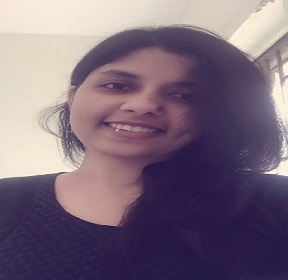
Karthika C
Indian Institute of Science IndiaTitle: Electrochemical switching between second harmonic generation and fluorescence in bimetallic Ru complexes
Abstract:
The design and development of transition-metal containing chromophores where changing the oxidation state of the metal(s) alters their optical property are desirable for a variety of applications in chemistry and biology. If one of the optical properties is one-photon fluorescence and the other is second harmonic (two-photon) generation, a desirable change would be alternation between these two optical properties by tuning the oxidation state of the metal center(s) by external means. This will, first of all, make such a chromophore less dependent on the medium or environment which is unlikely to show similar alternating optical response based on the external stimuli. Here we report two Ru based bimetallic complexes, [NC-Ru-(bpy)2-CN-Ru(bpy)2-CN](PF6) (1) and [Ru(bpy)2-bptz-Ru(bpy)2](PF6)2(2) and investigated their second harmonic generation intensity and fluorescence quantum yields after oxidation/reduction of the Ru center(s) electrochemically. We have determined from cyclic voltammetry (CV) that the first oxidation of 10 to 1+1 occurs at +0.75 V and the second oxidation of 1+1 to 1+2 at +1.34 V. Similarly the first oxidation of 20 to 2+1 happens at a much higher potential of + 1.95 V and the second oxidation of 2+1 to 2+2 at +2.2V. The spectro-electrochemical studies suggest that the mixed-valent (MV) state of both the complexes exhibit a high energy MLCT band around ~530 nm and an inter-valence charge transfer (IVCT) band in the infrared around ~1200 nm. The MLCT band is attributed to metal d-orbital to ligand π* orbital charge transfer and the IVCT band is assigned to the metal-metal charge transfer from Ru(II) to Ru(III) states. In-situ second harmonic light scattering (SHLS) experiments were carried out in a customized electrochemical cell, where the SH intensity was measured with respect to a particular oxidation state of the metal. We find that the mixed-valent bimetallic complex produces more intense SH light compared to the other oxidation states. In addition, we monitored the change in fluorescence intensity of the bimetallic complexes in different oxidation states.
Biography:
Karthika C is a senior research fellow pursuing her Doctorate in physical chemistry at Inorganic and Physical Chemistry Department, Indain Institute Of Science, Bangalore, India. She obtained her Masters in chemistry in 2013 from University of Calicut, India. Currently she is working on the second harmonic quantification of organometallic complexes and manipulation of molecular properties using external stimuli. The research work involves synthesis, electrochemical measurements and second harmonic measurements. Her research interests are quantum mechanical calculations, spectro-electrochemistry and non-linear optics. She has presented abstract on redox switching of first hyperpolarizability of transition metal complexes at international conference on photonics, 2018 held in IIT Delhi.
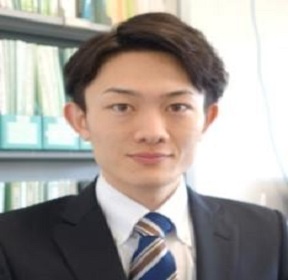
Shuhei Kodama
Tokyo University of Agriculture and Technology JapanTitle: Control of short-pulsed laser-induced periodic surface structures with magnetic abrasive finishing
Abstract:
Laser-induced periodic surface structures (LIPSS) have been studied to alter surface functions such as tribology, wettability, optical properties and bioaffinity. It has been found that microgrooves produced by using ultraprecision cutting are effective to control LIPSS with the nickelphosphorus (Ni-P) plating layer substrate due to the propagation of plasma waves improved by the grooves. However, microgrooves can remain on the irradiated surface. On the other hand, it has been founded that the geometry (the pitch length, the height and the direction) of LIPSS varies by crystal structures on the 304 stainless steel (SUS304) surface. In this study, to clarify the phenomenon and principles of groove-assisted LIPSS and to control LIPSS with the surfaces of
various materials, a finite-difference time-domain simulation and experiments are conducted with SUS304 and Ni-P plating layer substrates. The use of magnetic abrasive finishing (MAF) is proposed to create micro/nano-grooves prior to the shortpulsed-laser irradiation. The subsequent laser irradiation fabricated straight LIPSS superimposed on the MAF-processed surface. While the height of LIPSS was increased by the MAF-groove, the pitch length of LIPSS depended on the laser wavelength.This demonstrates the efficacy of the developed method for controlling LIPSS. The surface geometry prior to the short-pulsed laser irradiation is the dominant factor in determining the geometry of the LIPSS.
Biography:
Shuhei Kodama is an assistant professor at Tokyo University of Agriculture and technology in Tokyo, Japan. He holds a Bachelor and a Master in Engineering and received a PhD in Engineering from Tohoku University in March 2019. Dr. Kodama is working as an assistant professor from April 2019. His research activities focus on short-pulsed laser-induced periodic surface structures (SPLIPSS) to clarify principles and phenomena, to control LIPSS and to provide a material surface with various functionalities such as reduction of friction, water repellency, anti-reflection and bioaffinity. He gave 9 presentations and 1 lecture about SPLIPSS at international and domestic conferences. Dr. Kodama is passionate about precision processing.
Video Presentation
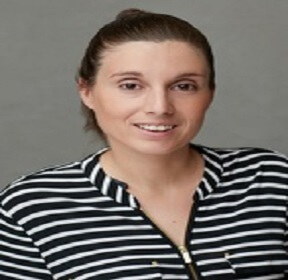
Ana Doblas
U.S.A.Title: Quantitative Phase Imaging as an alternative screening and monitoring method for diabetes
Abstract:
The design and development of transition-metal containing chromophores where changing the oxidation state of the metal(s) alters their optical property are desirable for a variety of applications in chemistry and biology. If one of the optical properties is one-photon fluorescence and the other is second harmonic (two-photon) generation, a desirable change would be alternation between these two optical properties by tuning the oxidation state of the metal center(s) by external means. This will, first of all, make such a chromophore less dependent on the medium or environment which is unlikely to show similar alternating optical response based on the external stimuli. Here we report two Ru based bimetallic complexes, [NC-Ru-(bpy)2-CN-Ru(bpy)2-CN](PF6) (1) and [Ru(bpy)2-bptz-Ru(bpy)2](PF6)2(2) and investigated their second harmonic generation intensity and fluorescence quantum yields after oxidation/reduction of the Ru center(s) electrochemically. We have determined from cyclic voltammetry (CV) that the first oxidation of 10 to 1+1 occurs at +0.75 V and the second oxidation of 1+1 to 1+2 at +1.34 V. Similarly the first oxidation of 20 to 2+1 happens at a much higher potential of + 1.95 V and the second oxidation of 2+1 to 2+2 at +2.2V. The spectro-electrochemical studies suggest that the mixed-valent (MV) state of both the complexes exhibit a high energy MLCT band around ~530 nm and an inter-valence charge transfer (IVCT) band in the infrared around ~1200 nm. The MLCT band is attributed to metal d-orbital to ligand π* orbital charge transfer and the IVCT band is assigned to the metal-metal charge transfer from Ru(II) to Ru(III) states. In-situ second harmonic light scattering (SHLS) experiments were carried out in a customized electrochemical cell, where the SH intensity was measured with respect to a particular oxidation state of the metal. We find that the mixed-valent bimetallic complex produces more intense SH light compared to the other oxidation states. In addition, we monitored the change in fluorescence intensity of the bimetallic complexes in different oxidation states
Biography:
Ana Doblas received her BS, Ms.and PhD degrees in Physics from the Universitat de València, Spain, in 2010, 2011 and 2015, respectively. After she finished her PhD work, she joined the Optical Coherence Imaging Laboratory under the supervision of Dr A. Oldenburg (Department of Physics and Astronomy, University of North Caroline in Chapel Hill, U.S.A.) where she did her 1-year Postdoc. Since 2016, she is at the Department of Electrical and Computer Engineering at the University of Memphis (Memphis, Tennessee, U.S.A.). Firstly, as a Research Assistant Professor in the Computational Imaging Research Laboratory (CIRL) and since 2019 as an Assistant Professor and principal investigator of the Optical Imaging Research Laboratory (OIRL). Her current research interests are focused on optical engineering, computational optics and three-dimensional imaging with special interest in the design of novel microscopic imaging systems and their applications. Her final goal is to develop novel optical microscopes that provide us an understanding of unsolved biological questions. Although this topic requires multi-disciplinary approaches from different backgrounds such as Biology, Physics, Microscopy and Informatics, her particular focus is the development of custom optical imaging methods with some insights in image analysis tools to pursue cutting-edge research. Since 2012, she is author of 23 peer-reviewed scientific journals, her work has been presented at over fifty international conferences and she is co-inventor of two US patents.
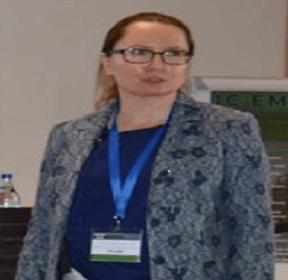
Paula Gawryszewska
University of Wroclaw PolandTitle: Influence of the structure modification of lanthanide chelates with N - (diphenylphosphoryl)pyrazine-2-carboxamide on brilliant tunable luminescence
Abstract:
Lanthanide coordination compounds with high quantum efficiency and brightness of emission are still desirable due to the possibilities of numerous applications ranging from biomedical diagnostics to photonic devices and solar energy conversion. The proper design of organic ligands plays a crucial role in optimizing the photophysical properties of lanthanide coordination compounds and makes them effective molecular converters of electromagnetic radiation.
We present a series of photostable lanthanide compounds in which N (diphenylphosphoryl)pyrazine-2-carboxamide plays the role of a perfect sensitizer for the emission of various lanthanide ions in the solid state and a polymer matrix (PMMA). The structure of the ligand was carefully designed to minimize the multiphonon quenching of lanthanide emission and to increase the efficiency of the intersystem crossing. The crystal structure of lanthanide compounds is characterized by high stiffness due to its architecture. This with a well fulfilled condition of resonance between the ligand triplet state and excited lanthanide levels translated to very high overall quantum yield (Q_Eu^L = 98 %, Q_Tb^L = 98 %, Q_Sm^L = 11 %, Q_Dy^L = 17 %).
Biography:
Paula Gawryszewska is D.Sc. Eng. at the Faculty of Chemistry, University of Wroclaw. She received her M. Sc. in Wroclaw University of Science and Technology. In 1998 she received a PhD in Faculty of Chemistry at the University of Wrocław in the group of prof. Janina Legendziewicz. Then she spent 6 months (1998/1999) at Michigan Technological University (MTU) in the group of prof. James Riehl, where she dealt with polarized luminescence of racemic mixtures of lanthanide complexes. In the USA she stayed twice more on short stays in 1999 and 2014 in MTU and University of Minnesota Duluth (prof. J. Riehl). Her scientific interests include coordination chemistry, luminescent materials, energy transfer in lanthanide compounds, plasmon-enhanced fluorescence.

